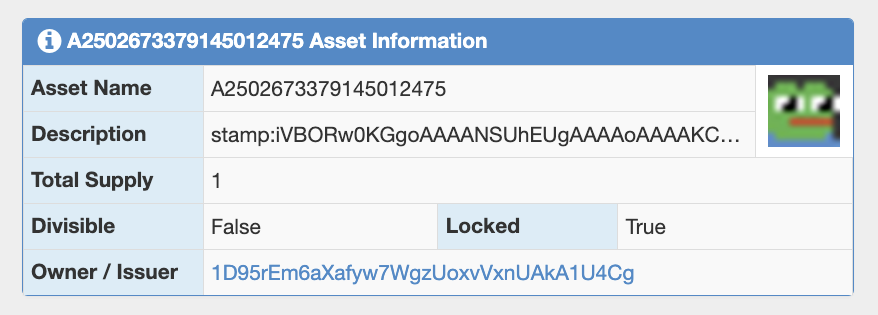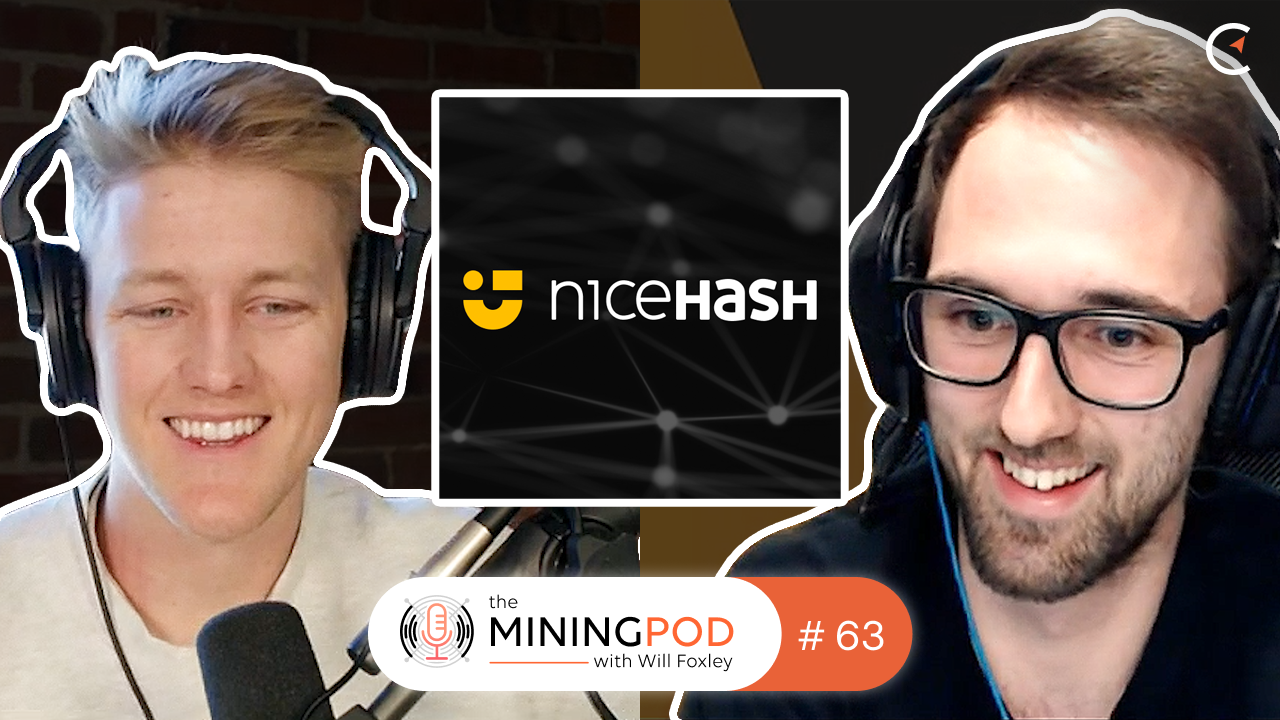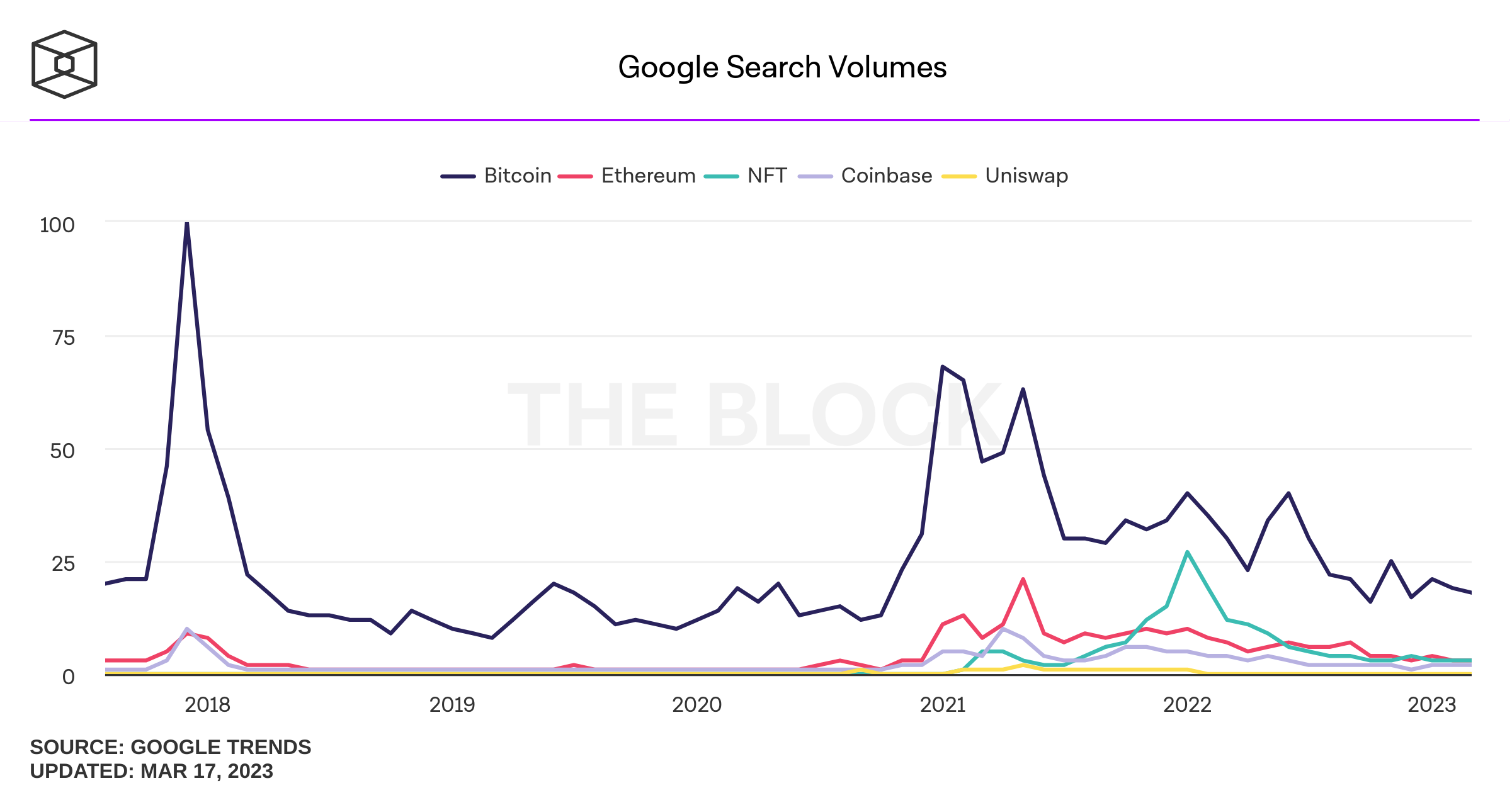 |
|
April 4, 2023
Subscribe to Mining Memo
|
| Price |
$28,155 |
▼0.33% |
| Hashrate |
336 EH/s |
▼5.88% |
| Difficulty |
46.84 T |
▲7.56% |
| Revenue* |
$0.077 |
▲5% |
|
|
|
|
Ordinals, Inscriptions...Stamps?
|
|
You might be tired of all this Ordinals talk, which is why we bring you a different discussion today: Stamps!
Stamps are yet another novel way of pushing miscellaneous data onto the Bitcoin blockchain. Typically reserved for normal transactions–think move Bitcoin from wallet A to wallet B–or conservative smart contract operations such as a multisig, chain
entrepreneurs have captured magic in a bottle twice now with the recent launch of the Stamps protocol.
Stamps works by pulling on the Counterparty protocol, a 2014
endeavor to bring additional functionality to Bitcoin, such as a virtual machine. Counterparty has a native decentralized exchange (DEX) and supports non-fungible tokens (NFTs), among other features.
|
 |
|
A Bitcoin stamp on the Counterparty block explorer.
|
|
Stamps operates by “encoding an image's binary content to a base64 string, placing this string as a suffix to STAMP: in a transaction's description key, and then broadcasting it using the Counterparty protocol onto the Bitcoin ledger,” according
to the project’s GitHub.
In other words, Stamps takes an image, translates it into a common encoding scheme–often used for sending email image attachments–which is then attached to a transaction. Counterparty then takes the data and sends it to the Bitcoin network using a Pay-to-Script-Hash (P2SH) transaction, allowing the data to stay on-chain forever if the corresponding outputs are not spent.
So, why should we care? For two reasons: 1) Bitcoiners are finding new ways to use older updates for on-chain innovation, which 2) increases the demand for blockspace, thereby increasing mining fees.
At this point, I’d love to drop a nice chart showing Inscriptions or Stamps increasing hashprice, but it’s really not. Regardless, Bitcoin is increasingly being exchanged for Bitcoin native assets–something fairly uncommon a few months ago.
|
|
|
|
Mining News Feed
|
|
The Block / Bitcoin miners report best monthly revenues in 10 months
|
|
|
|
Kaiko /
Binance loses 16% global market share to close Q1
|
|
|
|
DB / US Govt
Sold 9,800 BTC on March 14, Intends to Sell a Further 41,500 BTC Connected to Silk Road
|
|
|
|
|
|
Crucial to hashing power, energy efficiency, and machine reliability, hashboards are the heart of mining operations. Foundry's comprehensive, hands-on Intro to Hashboard Diagnosis and Repair course is designed to equip miners with the necessary skills to tackle common hardware failures in house, eliminate repair bottlenecks, and quickly bring machines back online.
Offered by the same experts who provide top technical training for Mining Technicians in the U.S., the next Intro to Hashboard Diagnosis and Repair course takes place in Rochester, NY from May 1-5, 2023.
Register today at FoundryAcademy.com |
|
|
|
 |
|
Today we are joined by Marko Tarman of Nicehash. We discuss how it operates, solo miners finding blocks on Nicehash and why operators might want to sell hashrate into a marketplace.
|
|
Watch on YouTube
here.
|
|
|
|
 |
|
Today we are joined by Rete Browning & Isaac Fithian from Cathedra to discuss their recent underclocking study, what it means for efficiency, profitability and rig lifespan.
|
|
Watch on YouTube
here.
|
|
|
|
|
Chart of the Week
|
 |
|
|
|
Google search trends are a strong indicator of retail interest in Bitcoin and crypto. While Bitcoin may be experiencing a nice pump since January 1, interest remains low overall compared to past cycles.
Source: The Block
|
|
|
|
|
|
| Stronghold Digital |
2.39% |
$0.69 |
$5.85 |
| Iris Energy |
2.35% |
$3.04 |
$15.83 |
| Hut 8 |
1.68% |
$1.82 |
$5.63 |
| Bitfarms |
0.66% |
$0.98 |
$3.76 |
| Cleanspark |
-0.37% |
$2.71 |
$13.36 |
|
|
*As of Tuesday, April 4.
|
|
|
|
|